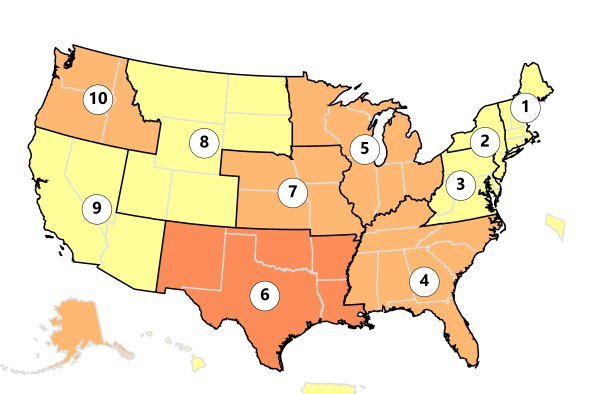Modern aircraft are producing longer-lasting contrails that warm the planet faster than those created by older aircraft, presenting a "double whammy" for the aviation industry's carbon reduction efforts, scientists at Imperial College London have said.
Contrails, short for condensation trails, are thin clouds formed from the water vapor produced by aircraft exhausts at high altitudes.
Their cirrus-like formations, though visually pleasing to some, trap heat in Earth's atmosphere and contribute to the greenhouse effect. Vehicles engineered for the higher altitudes of modern air travel mean each vapor trail lingers for longer.
"It's common knowledge that flying is not good for the climate. However, most people do not appreciate that contrails and jet fuel carbon emissions cause a double whammy warming of the climate," lead author Edward Gryspeerdt said in a statement.
He added, "This study throws a spanner in the works for the aviation industry."
The study used machine learning to analyze satellite data on more than 64,000 contrails from a range of aircraft flying over the North Atlantic Ocean.
It found that flights are inadvertently doing more harm by flying at higher altitudes to preserve fuel and produce less carbon per passenger.
To reduce jet fuel consumption, modern aircraft are designed to fly at higher altitudes, where the air is thinner, with less aerodynamic drag.
Older flights used to peak at 35,000 feet, whereas modern vehicles, such as the Airbus A350 and Boeing 787, average heights of 38,000 feet.
Private jets are the worst offenders—in some cases, their contrails are of a similar size to their larger commercial counterparts.
Operating at even higher altitudes (low traffic flight paths for the superrich tend to peak at 40,000 feet) in the name of comfort reflects new challenges faced by the industry.
Air travel of this kind is a growing business. More than 4 million business jet flights take off annually in the U.S. alone, and the size of the world's commercial fleet sits at 23,133.
Reducing soot emissions from engines can shorten contrail lifespan, offering a potential solution. Tiny cloud droplets and ice crystals latch on to soot in the atmosphere as a result of inefficient fuel combustion.
"From other studies, we know that the number of soot particles in aircraft exhaust plays a key role in the properties of newly formed contrails. We suspected that this would also affect how long contrails live for," co-author Marc Stettler said.
"Our study provides the first evidence that emitting fewer soot particles results in contrails that fall out of the sky faster compared to contrails formed on more numerous soot particles from older, dirtier engines," he continued.
Another action would be forecasting where these contrail-forming regions occur to avoid them on future flight routes, but the team said a lack of information makes this difficult to do.
"Most flights don't form large amounts of contrails. We know that the regions of the atmosphere where persistent contrails can form are relatively thin, so aircraft could be rerouted to fly above or below them," Gryspeerdt told Newsweek.
However, the goal should be to reduce our collective dependency on air travel and other carbon-intensive activities, Richard Allan, a professor in climate science at the University of Reading in the U.K., told Newsweek.
"The warming effect from aircraft contrails is something of a red herring," he said.
Allan added: "It is more important to limit the growing number of flights contributing, along with other human activities, to rising greenhouse gasses, which is the main cause of global warming."
Do you have a tip on a science story that Newsweek should be covering? Do you have a question about aviation? Let us know via science@newsweek.com.
References
Gryspeerdt, E., Stettler, M., Teoh, R., Burkhardt, U., Delovski, T., Driver, O., Painemal, D. (2024). Operational differences lead to longer lifetimes of satellite detectable contrails from more fuel efficient aircraft. Environmental Research Letters, 19(8). https://doi.org/10.1088/1748-9326/ad5b78
Disclaimer: The copyright of this article belongs to the original author. Reposting this article is solely for the purpose of information dissemination and does not constitute any investment advice. If there is any infringement, please contact us immediately. We will make corrections or deletions as necessary. Thank you.



